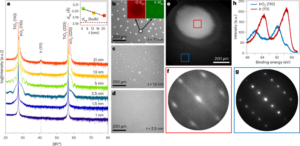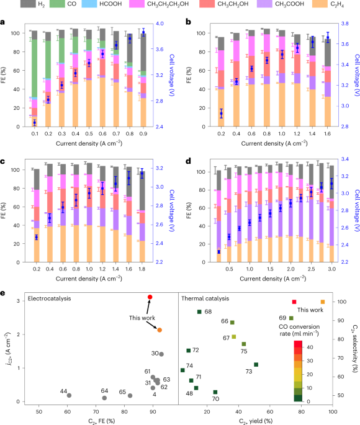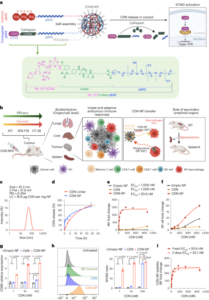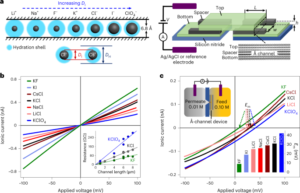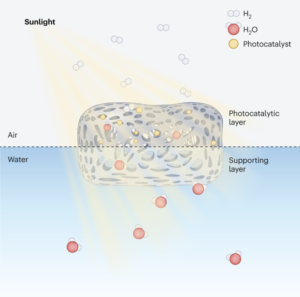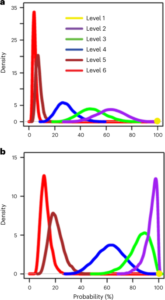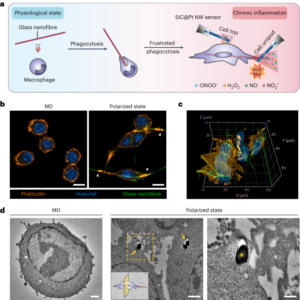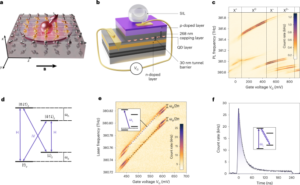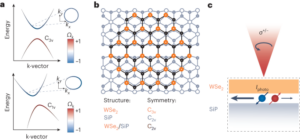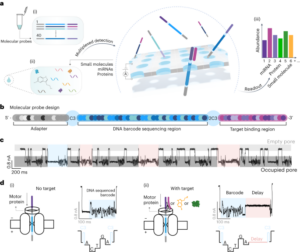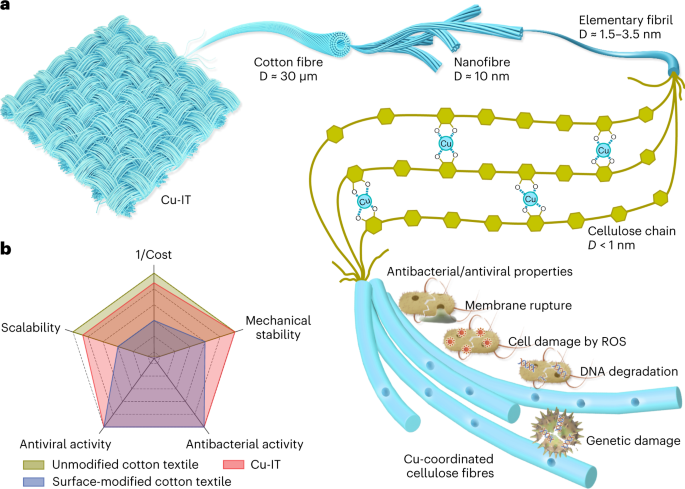
Kozel, T. R. & Burnham-Marusich, A. R. Point-of-care testing for infectious diseases: past, present, and future. J. Clin. Microbiol. 55, 2313–2320 (2017).
Sohrabi, C. et al. World Health Organization declares global emergency: a review of the 2019 novel coronavirus (COVID-19). Int. J. Surg. 76, 71–76 (2020).
Amanat, F. & Krammer, F. SARS-CoV-2 vaccines: status report. Immunity 52, 583–589 (2020).
Sidwell, R. W., Dixon, G. J. & Mcneil, E. Quantitative studies on fabrics as disseminators of viruses: I. Persistence of vaccinia virus on cotton and wool fabrics. Appl. Environ. Microbiol. 14, 55–59 (1966).
Dixon, G. J., Sidwell, R. W. & Mcneil, E. Quantitative studies on fabrics as disseminators of viruses: II. Persistence of poliomyelitis virus on cotton and wool fabrics. Appl. Environ. Microbiol. 14, 183–188 (1966).
Sidwell, R. W., Dixon, G. J., Westbrook, L. & Forziati, F. H. Quantitative studies on fabrics as disseminators of viruses: IV. Virus transmission by dry contact of fabrics. Appl. Environ. Microbiol. 19, 950–954 (1970).
Gerba, C. P. & Kennedy, D. Enteric virus survival during household laundering and impact of disinfection with sodium hypochlorite. Appl. Environ. Microbiol. 73, 4425–4428 (2007).
Katoh, I. et al. Potential risk of virus carryover by fabrics of personal protective gowns. Front. Public Health 7, 121 (2019).
Ansell, M. P. & Mwaikambo, L. Y. in Handbook of Textile Fibre Structure Vol. 2 (eds Eichhorn, S. J. et al.) 62–94 (Woodhead, 2009).
Hu, L. et al. Stretchable, porous, and conductive energy textiles. Nano Lett. 10, 708–714 (2010).
Lei, L., Li, S. & Gu, Y. Cellulose synthase complexes: composition and regulation. Front. Plant Sci. 3, 75 (2012).
Turner, S. & Kumar, M. Cellulose synthase complex organization and cellulose microfibril structure. Philos. Trans. A Math. Phys. Eng. Sci. 376, 20170048 (2018).
Vasilev, K. Nanoengineered antibacterial coatings and materials: a perspective. Coatings 9, 654 (2019).
Zhou, J., Hu, Z., Zabihi, F., Chen, Z. & Zhu, M. Progress and perspective of antiviral protective material. Adv. Fiber Mater. 2, 123–139 (2020).
Cloutier, M., Mantovani, D. & Rosei, F. Antibacterial coatings: challenges, perspectives, and opportunities. Trends Biotechnol. 33, 637–652 (2015).
Karim, N. et al. Sustainable personal protective clothing for healthcare applications: a review. ACS Nano 14, 12313–12340 (2020).
Balasubramaniam, B. et al. Antibacterial and antiviral functional materials: chemistry and biological activity toward tackling COVID-19-like pandemics. ACS Pharmacol. Transl. Sci. 4, 8–54 (2021).
Hassabo, A. G., El-Naggar, M. E., Mohamed, A. L. & Hebeish, A. A. Development of multifunctional modified cotton fabric with tri-component nanoparticles of silver, copper and zinc oxide. Carbohydr. Polym. 210, 144–156 (2019).
Suryaprabha, T. & Sethuraman, M. G. Fabrication of copper-based superhydrophobic self-cleaning antibacterial coating over cotton fabric. Cellulose 24, 395–407 (2016).
Xu, Q. et al. Preparation of copper nanoparticles coated cotton fabrics with durable antibacterial properties. Fibers Polym. 19, 1004–1013 (2018).
Ali, A. et al. Copper coated multifunctional cotton fabrics. J. Ind. Text. 48, 448–464 (2017).
Anita, S., Ramachandran, T., Rajendran, R., Koushik, C. V. & Mahalakshmi, M. A study of the antimicrobial property of encapsulated copper oxide nanoparticles on cotton fabric. Text. Res. J. 81, 1081–1088 (2011).
Galdiero, S. et al. Silver nanoparticles as potential antiviral agents. Molecules 16, 8894–8918 (2011).
Monette, A. & Mouland, A. J. Zinc and copper ions differentially regulate prion-like phase separation dynamics of pan-virus nucleocapsid biomolecular condensates. Viruses 12, 1179 (2020).
Tavakoli, A. & Hashemzadeh, M. S. Inhibition of herpes simplex virus type 1 by copper oxide nanoparticles. J. Virological Methods 275, 113688 (2020).
Fang, L. et al. Impact of cell wall structure on the behavior of bacterial cells in the binding of copper and cadmium. Colloids Surf. A Physicochem. Eng. Asp. 347, 50–55 (2009).
Grass, G., Rensing, C. & Solioz, M. Metallic copper as an antimicrobial surface. Appl. Environ. Microbiol. 77, 1541–1547 (2011).
Warnes, S. L., Caves, V. & Keevil, C. W. Mechanism of copper surface toxicity in Escherichia coli O157:H7 and Salmonella involves immediate membrane depolarization followed by slower rate of DNA destruction which differs from that observed for Gram-positive bacteria. Environ. Microbiol. 14, 1730–1743 (2012).
Lemire, J. A., Harrison, J. J. & Turner, R. J. Antimicrobial activity of metals: mechanisms, molecular targets and applications. Nat. Rev. Microbiol. 11, 371–384 (2013).
Isogai, A. NMR analysis of cellulose dissolved in aqueous NaOH solutions. Cellulose 4, 99–107 (1997).
Philipp, B., Kunze, J. & Fink, H. P. in The Structures of Cellulose Vol. 340 (ed. Atalla, R. H.) Ch. 1 (American Chemical Society, 1987).
Gaspar, D. et al. Nanocrystalline cellulose applied simultaneously as the gate dielectric and the substrate in flexible field effect transistors. Nanotechnology 25, 094008 (2014).
Li, T. et al. Cellulose ionic conductors with high differential thermal voltage for low-grade heat harvesting. Nat. Mater. 18, 608–613 (2019).
Ogawa, Y. et al. Formation and stability of cellulose–copper–NaOH crystalline complex. Cellulose 21, 999–1006 (2013).
Yang, C. et al. Copper-coordinated cellulose ion conductors for solid-state batteries. Nature 598, 590–596 (2021).
Rupp, H. & Weser, U. X-ray photoelectron spectroscopy of copper(II), copper(I), and mixed valence systems. Bioinorg. Chem. 6, 45–59 (1976).
Biesinger, M. C. Advanced analysis of copper X-ray photoelectron spectra. Surf. Interface Anal. 49, 1325–1334 (2017).
Lu, Q., Gao, F. & Komarneni, S. Cellulose-directed growth of selenium nanobelts in solution. Chem. Mater. 18, 159–163 (2006).
Zhang, D. Y. et al. Microwave-assisted synthesis of PdNPs by cellulose solution to prepare 3D porous microspheres applied on dyes discoloration. Carbohydr. Polym. 247, 116569 (2020).
Creager, A. N. The Life of a Virus: Tobacco Mosaic Virus as an Experimental Model, 1930–1965 (University of Chicago Press, 2002).
Scholthof, K. B. Tobacco mosaic virus: a model system for plant biology. Annu. Rev. Phytopathol. 42, 13–34 (2004).
Caspar, D. L. D. in Advances in Protein Chemistry Vol. 18 (eds Anfinsen, C. B. et al.) 37–121 (Academic Press, 1964).
Noyce, J. O., Michels, H. & Keevil, C. W. Inactivation of influenza A virus on copper versus stainless steel surfaces. Appl. Environ. Microbiol. 73, 2748–2750 (2007).
Borkow, G., Lara, H. H., Covington, C. Y., Nyamathi, A. & Gabbay, J. Deactivation of human immunodeficiency virus type 1 in medium by copper oxide-containing filters. Antimicrob. Agents Chemother. 52, 518–525 (2008).
Warnes, S. L. & Keevil, C. W. Inactivation of norovirus on dry copper alloy surfaces. PLoS ONE 8, e75017 (2013).
Knill, C. J. & Kennedy, J. F. Degradation of cellulose under alkaline conditions. Carbohydr. Polym. 51, 281–300 (2003).
Shao, C. et al. Mechanism for the depolymerization of cellulose under alkaline conditions. J. Mol. Modeling 24, 124 (2018).
Hearle, J. W. S. & Sparrow, J. T. Further studies of the fractography of cotton fibers. Text. Res. J. 49, 268–282 (1979).
Hearle, J. W. S. in Fiber Fracture (eds Elices, M. & Llorca, J.) 57–71 (Elsevier, 2002).
Mia, R. et al. Review on various types of pollution problem in textile dyeing & printing industries of Bangladesh and recommandation for mitigation. J. Tex. Eng. Fash. Technol. 5, 220–226 (2019).
Lellis, B., Fávaro-Polonio, C. Z., Pamphile, J. A. & Polonio, J. C. Effects of textile dyes on health and the environment and bioremediation potential of living organisms. Biotechnol. Res. Innov. 3, 275–290 (2019).
Leshchev, D. et al. The Inner Shell Spectroscopy beamline at NSLS-II: a facility for in situ and operando X-ray absorption spectroscopy for materials research. J. Synchrotron Radiat. 29, 1095–1106 (2022).
Ressler, T. WinXAS: a program for X-ray absorption spectroscopy data analysis under MS-Windows. J. Synchrotron Radiat. 5, 118–122 (1998).
Padmanabhan, M. S., Kramer, S. R., Wang, X. & Culver, J. N. Tobacco mosaic virus replicase-auxin/indole acetic acid protein interactions: reprogramming the auxin response pathway to enhance virus infection. J. Virol. 82, 2477–2485 (2008).
Jalily, P. H. et al. Mechanisms of action of novel influenza A/M2 viroporin inhibitors derived from hexamethylene amiloride. Mol. Pharmacol. 90, 80–95 (2016).
- SEO Powered Content & PR Distribution. Get Amplified Today.
- Platoblockchain. Web3 Metaverse Intelligence. Knowledge Amplified. Access Here.
- Source: https://www.nature.com/articles/s41565-022-01278-y
- 1
- 10
- 11
- 1998
- 2011
- 2012
- 2014
- 2016
- 2017
- 2018
- 2019
- 2020
- 2021
- 2022
- 28
- 39
- 3d
- 7
- 9
- a
- academic
- Action
- activity
- advanced
- agents
- Alloy
- American
- analysis
- and
- applications
- applied
- article
- Bacteria
- Bangladesh
- batteries
- biology
- Cells
- challenges
- chemical
- chemistry
- chen
- chicago
- Clothing
- complex
- conditions
- contact
- Copper
- Coronavirus
- Coronavirus (COVID-19)
- COVID-19
- data
- data analysis
- declares
- Derived
- Development
- diseases
- dna
- dry
- during
- dynamics
- ed
- effect
- effects
- emergency
- encapsulated
- energy
- Engineering
- Environment
- Ether (ETH)
- fabric
- fabrics
- Facility
- fibers
- field
- filters
- flexible
- followed
- formation
- from
- functional
- further
- future
- GAO
- Global
- Growth
- Harvesting
- Health
- healthcare
- High
- highly
- household
- HTTPS
- human
- immediate
- Impact
- in
- industries
- infection
- Infectious diseases
- Influenza
- interactions
- Interface
- Ionic
- Laundering
- Life
- LINK
- living
- material
- materials
- math
- mechanism
- medium
- Metals
- mitigation
- mixed
- model
- modified
- MOL
- molecular
- Nature
- novel
- Novel Coronavirus
- opportunities
- organization
- Pandemics
- past
- persistence
- personal
- perspective
- perspectives
- phase
- plato
- Plato Data Intelligence
- PlatoData
- Pollution
- potential
- Prepare
- present
- press
- Problem
- Program
- Progress
- properties
- property
- Protective
- Protein
- public
- quantitative
- Rate
- Regulate
- Regulation
- report
- research
- response
- review
- Risk
- SARS-CoV-2
- SCI
- Shell
- Silver
- Simplex
- simultaneously
- Society
- solution
- Solutions
- sparrow
- Spectroscopy
- Stability
- stable
- Stainless Steel
- Status
- steel
- structure
- studies
- Study
- surf
- Surface
- sustainable
- system
- Systems
- targets
- Testing
- The
- thermal
- to
- tobacco
- toward
- types
- under
- university
- University of Chicago
- vaccines
- various
- Versus
- via
- virus
- viruses
- Voltage
- W
- which
- world
- World Health Organization
- X
- x-ray
- zephyrnet

